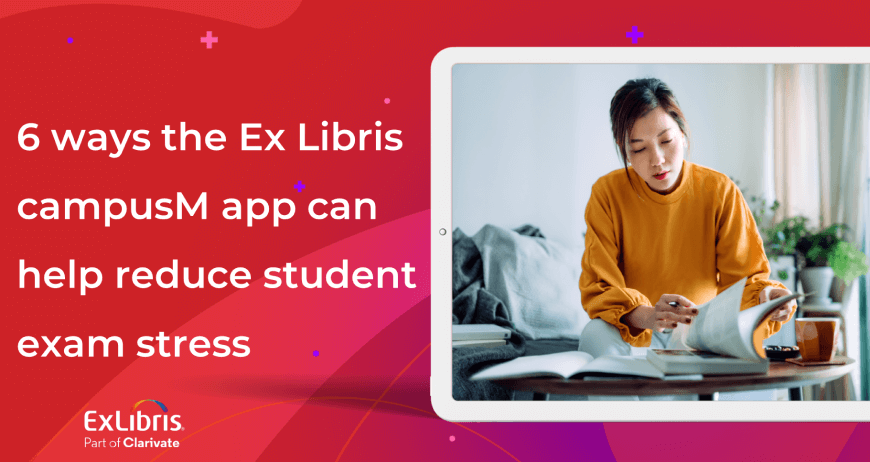Having looked at the most pressing challenges in resource list management in the previous installment of this blog series, we will now turn to the latest practices and technologies that can help us address these issues.
As noted last time, the VALA 2016 paper entitled “A global and institutional resource-list repository: a treasure trove for deriving new insights and providing innovative services” identified several key aspects of modern resource list management: standard practices, access to lists and materials on the lists, compliance with copyright regulations, usage information, and integration. This categorization will help us to frame the solutions put forward by the paper’s authors, Tamar Sadeh of the Ex Libris Group and Victoria University Librarian Janet Fletcher, for the creation and use of modern academic resource lists.
Sadeh and Fletcher referred to Ex Libris Leganto as an example of a resource list management tool that comprehensively addresses the issues they raised. Leganto was developed by Ex Libris in collaboration with five international partners: UNSW Australia; the University of Oklahoma; Imperial College, London; Kingston University, London; and the University of Leuven.
Standard Practices
Modern resource lists include written, visual and digital formats, and are often dynamic and modified during the semester. With current practices and systems, this often requires instructors and students to use a variety of tools for managing and accessing resources that reside in the same resource list.
In Leganto, the heterogeneous and dynamic nature of a resource lists is easily managed by a uniform, coherent interface that instructors, students, and the library use to manage and access resource lists.. A robust data repository “supports the persistency, updatability, and scalability of the lists,” according to Sadeh and Fletcher. However, they note, adapting to the new standards “may cause a degree of disruption, at least in the short term.” A large part of this disruption is actually a good thing, as “such a technology would highlight inconsistencies, duplications, lists that have not been modified in a long time, outdated information, and broken links.”
Access to Lists and Materials
Current communications technology has changed the way in which instructors and their students interact and access information. An effective resource list must reflect the most current user expectations, or else it will fail in its purpose.
A prerequisite for a successful solution is an appealing, engaging, and easy-to-use interface, tailored to the user or type of user. The Leganto system, Sadeh and Fletcher noted, was so designed, enabling instructors to easily add to their resource lists from a variety of applications without the need for complex processes. Innovative services (such as student suggestions and automated recommendations) and comment threads engage both instructors and students.
Sadeh and Fletcher further highlighted an extremely beneficial potential consequence of better access to reading lists: interaction and collaboration among instructors, students and librarians. With Leganto, for example, instructors can get direct and immediate feedback about their resource lists from colleagues, librarians and students. Such back and forth can help instructors discover new types of resources, while encouraging student engagement.
Compliance with Copyright Legislation
In their description of the challenges libraries face in managing resource lists, Sadeh and Fletcher devoted attention to copyright issues in academia. With resource list tools such as Leganto that enable instructors seamlessly share reading list data with the library, librarians can proactively clear copyrights and better monitor resources added to course reading lists. When needed, librarians can receive automatic alerts, inform instructors of a problem, and take immediate corrective action.
Usage Information
A centralized system for resource list creation, promotion and access can provide extremely valuable insights into the impact and effectiveness of the library collection and services offered. As Sadeh and Fletcher noted, Leganto is designed to provide analytics based primarily on resource usage data. This allows librarians to identify trends, information needs and user behavior. “Analytics that highlight the ways in which such lists are used, at the institution or globally… help librarians assess and demonstrate the library’s contribution to teaching and learning,” the authors said.
Integration
Each stage of the lifecycle of a resource list has different requirements, from creating a list through making sure the items on the list are accessible to meeting student demands to revising lists and applying lessons learned. Leganto takes the needs of all stakeholders, at each stage, into account, with cross-system workflows that automate procedures and enable the library to scale up to support all the institution’s courses.
In order to facilitate cross-system workflows, Leganto easily integrates with institutional and third-party systems and services. Specifically, Sadeh and Fletcher wrote, the technology involved “interoperates out of the box with the institution’s authentication, learning management system, and library management system, and can be integrated with copyright clearance services, the campus bookstore, and more. As a result, a single workflow can involve multiple participants, such as an academic and a librarian, and several systems and services, each automatically interacting with others as necessary.”
The Necessary Prerequisites
In their paper, after detailing what can be done to raise the value of resource lists today, Sadeh and Fletcher acknowledge that “it is the engagement of both students and academics that will result in high usage and demonstrate the value of a resource-list tool to all stakeholders.” They add, however, that Ex Libris’ Leganto, with its easy-to-use interfaces, cross-system workflows, and a mechanism for evaluation, is likely to be the tool that appeals to the various audiences and provide both educational and institutional value.
You might also be interested in

Alma
Leganto
Rapido
Rialto
Higher Education
March 14, 2024 |
5 min read
How academic library software can create a bold future

campusM Library
Leganto
February 29, 2024 |
5 min read
Your students don’t know how to re-engage

Leganto
Teaching and Learning
February 08, 2024 |
4 min read
The Leganto Marketing Playbook: How to market Leganto to faculty and staff
Great library experiences start with software
Download whitepaper

campusM
Leganto
Mobile Campus
Teaching and Learning
February 05, 2024 |
5 min read
6 ways the Ex Libris campusM app can help reduce student exam stress

Alma
campusM Library
Leganto
Primo
Rapido
October 29, 2023 |
4 min read
Why academic libraries are modernizing the user experience

Leganto
July 02, 2023 |
4 min read
Improve user experiences and showcase your library’s impact

Alma
Esploro
Leganto
Summon
Community
Employees
Higher Education
October 13, 2022 |
14 min read
Improving UX Design through Library Management System


